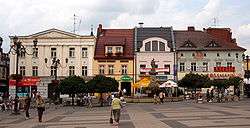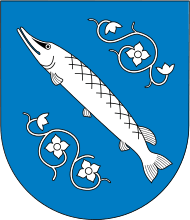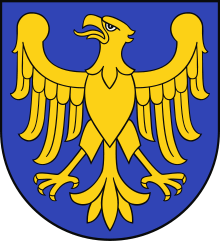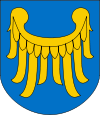Rybnik
| Rybnik | |||
|---|---|---|---|
|
Main Square | |||
| |||
 Rybnik | |||
| Coordinates: 50°5′N 18°33′E / 50.083°N 18.550°E | |||
| Country | Poland | ||
| Voivodeship | Silesian | ||
| County | city county | ||
| Established | 10th century | ||
| Town rights | 1327 | ||
| Government | |||
| • Mayor | Piotr Kuczera | ||
| Area | |||
| • City | 148 km2 (57 sq mi) | ||
| Highest elevation | 290 m (950 ft) | ||
| Lowest elevation | 210 m (690 ft) | ||
| Population (2013) | |||
| • City | 140 863 | ||
| • Metro | 527 017 | ||
| Time zone | CET (UTC+1) | ||
| • Summer (DST) | CEST (UTC+2) | ||
| Postal code | 44-200 to 44-292 | ||
| Area code(s) | +48 32 | ||
| Car plates | SR | ||
| Website | http://www.rybnik.pl/ | ||
Rybnik [ˈrɨbɲik] is a city in southwestern Poland, in the Silesian Voivodeship. The city first developed as a fishing centre (rybnik means fishpond in several Slavic languages) in medieval ages, then was a capital of so-called Rybnik State. Rybnik grew as an important centre of coal mining and the seat of the surrounding county in the 19th century. Under Poland's communist rule from 1945-1989 the city was projected to grow as a main mining centre of southern Poland.
The city of Rybnik has a population of about 141,410 as of December 2010 and remains the only powiat grodzki (urban county) in Upper Silesia with an increasing population. The Rybnik area with its large coal mines and power plants is an important economic region of Poland, and a visible center of music, home of the Szafrankowie Brothers State School of Music as well as a Philharmonic Orchestra.
Population
The city itself has 141,410 inhabitants out of which 88.9% identified themselves as Polish in the 2002 National Census. Its density is 955.3 per km². The city's population peaked in 1997 at 144,943. After that, it decreased slightly to 141,080 in 2007. Since then, the number of inhabitants has ticked up slightly. Rybnik's demographic situation remains far better than most other Polish cities, with a rather young population: 18.2% being under the age of 18 and only 15.9% older than 65.
According to the National Census of 2002 out of 142,731 Rybnik's citizens, 126,860 (88.9%) declared Polish nationality, 8,980 (6.3%) were Silesians and 382 were of German origin (0.3%).
Districts
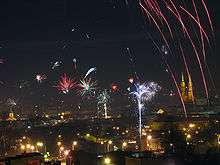
Rybnik is a powiat (county) divided into 27 districts that have its own administrative body. Most of them are suburban areas, including: Chwałęcice, Golejów, Gotartowice, Grabownia, Kamień, Kłokocin, Ligota – Ligocka Kuźnia, Meksyk, Ochojec, Orzepowice, Popielów, Radziejów, Rybnicka Kuźnia, Rybnik – Północ, Stodoły, Wielopole, Zamysłów and Zebrzydowice. There are also four former towns that have been merged with Rybnik: Boguszowice Stare, Chwałowice, Niedobczyce and Niewiadom. Two districts (Boguszowice Osiedle and Maroko-Nowiny) are typical Polish housing estates, with large blocks of flats and supporting buildings (such as shops and schools) built in communist time. The remaining three districts, Smolna, Śródmieście and Paruszowiec-Piaski formed the pre-war town of Rybnik. Those areas are densely built-up, with old town, city hall, most of schools, offices and shopping malls in Śródmieście (literally: city centre in Polish) and 19th century factories and houses in Paruszowiec.
The city of Rybnik is the centre of a metropolitan area, the Rybnik Coal Region (Rybnicki Okręg Węglowy) with a total population of 600,000. The distance to Katowice is about 50 km (31 mi), and to Ostrava about 30 km (19 mi).
History
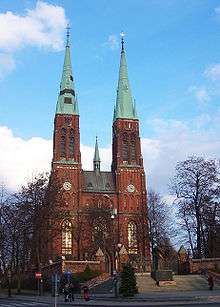
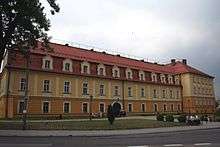

The city's name derives from the Proto-Slavic word for "fish" (ryba) and meant "fishpond" in the Old Polish language. The name highlights the importance of fish farming for the city's economy in the Middle Ages, which is reflected in its coat of arms until this day.
The city's origins can be traced back into the 9th and 10th century, when three Slavic settlements existed on Rybnik's present-day territory which eventually merged to form one town. In the course of the medieval eastward migration of German settlers (Ostsiedlung), Rybnik, as many other Polish settlements, was incorporated (granted city status and right) according to the so-called Magdeburg Law at some point before 1308 (the exact date remains unknown). This, however, is not to be confused with a change in national affiliation; Rybnik continued to be part of the Kingdom of Poland, until Silesia as a whole became a fiefdom of the Bohemian crown in 1327. The city continued to grow and developed into a regional trade centre. In the 15th century, the Hussites devastated the city, before being eventually defeated in a decisive battle on a hill nearby. From 1526, Bohemia, including the fiefdom of Silesia, which Rybnik was a part of, came under the authority of the Habsburg crown.
At the beginning of the War of the Austrian Succession between Frederick II of Prussia (the Great) and the Habsburg empress Maria Theresa of Austria, the greatest part of Silesia, including Rybnik, was annexed by Prussia in 1740, which Austria eventually recognized in 1763. Coal mining gained importance for Rybnik's economy as early as the 18th century. In 1871, Prussia, including Rybnik, merged into the German Empire, the first modern German nation state. At this point, Poland had already ceased to exist as an independent state, having been divided between Prussia, Austria and Russia in the Third Partition of Poland of 1795.
With the intensification of Germanization and anti-Polish politics in the German Empire in the late 19th and early 20th century, the ethnically mixed region of Upper Silesia became affected by growing tensions between German and Polish nationalists. After the end of World War I in 1918, Polish statehood was finally restored. Amidst an atmosphere of ethnic unrest, a referendum was organized to determine the future national affiliation of Upper Silesia. Although an overall majority had opted for Germany, the area was finally divided in an attempt to satisfy both parties. Although both parties considered the territory they were assigned insufficient, the division was justified insofar as in the German and Polish parts a majority had voted in favour of the respective nation.
The lowest number of pro-German votes was registered in the districts of Rybnik and Pszczyna (Pless). The city and the largest part of the district of Rybnik were attached to Poland; Rybnik thus became part of a Polish state for the first time since 1526. The referendum and eventual division of Upper Silesia were accompanied by three Silesian Uprisings, the first of which (in 1919) was centered on Rybnik.
Within the Second Polish Republic of the interwar period, Rybnik was part of the Silesian Voivodeship and enjoyed far-reaching political and financial autonomy.
With the outbreak of World War II in 1939, the border city Rybnik returned under the rule of Germany, directly incorporated into the German state. The population was ethnically categorized and either "re-Germanized" or disfranchised and partially deported into the General Government as Poles.
After the eventual German defeat which ended World War II in the European theatre of war in 1945, Rybnik was once more integrated into Poland, the territory of which was shifted westward on Joseph Stalin's initiative. Rybnik thus ceased to be German-Polish border city. Its population was again categorized to be either "re-polonized" or forcefully resettled to Germany. A large portion of ethnic Germans from Rybnik eventually settled in the West German city of Dorsten (District of Recklinghausen), which eventually became one of Rybnik's twin towns in 1994.
In the post-war period, coal mining continued to gain importance. The 1970s saw the construction of an important coal-fired power plant. A reservoir on the river Ruda was constructed to provide it with cooling water. In 2002, the University of Economics (Akademia Ekomomiczna), the University of Silesia (Uniwersytet Śląski), both in based Katowice, and the Silesian Polytechnic University (Politechnika Śląska) based in Gliwice established a joint campus in Rybnik to improve academic training opportunities in the area.
Tourism
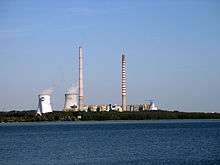


In contrast to the central part of the Upper Silesian Industry Area a short distance to the north, Rybnik enjoys the reputation of a "green" city having a relatively clean environment. While the city is not a centre of tourism, it does have various interesting sights and opportunities for recreation. To the north-east of the built-up area, there is a reservoir (Zalew Rybnicki) on the river Ruda, which serves as a cooling water source for the power station. Surrounded by forests, it offers swimming, fishing, sailing and surfing opportunities, and due to the power station's waste heat it is warm enough all year to be a habitat for grass carps. The Beskidy Mountains, a popular recreational area, also for skiing, are within a 1–2 hour drive.
Sights worth visiting:
- the neo-gothic basilica of St. Anthony (Bazylika św. Antoniego)
- the building of the former district authority (1887)
- the neo-classical new town hall (1928)
- the neo-classical old town hall with clock-tower, today housing the registry office and the museum of local history
- the Church of St. Catherine (Kościół św. Katarzyny) (1534)
- the Church of St. Lawrence (Kościół św. Wawrzyńca) (1717)
- a late Baroque estate house (1736)
- a Piast castle from the early 13th century, completely redesigned in the 18th century
Famous people from Rybnik
- Hermann Boehm (1884–1972) Kriegsmarine Admiral
- Jerzy Dudek, Real Madrid and Polish national football team goalkeeper
- Thomas Godoj, winner of 2008 Deutschland sucht den Superstar
- Henryk Górecki, composer of classical music
- Lidia Grychtołówna, Polish pianist
- Olek Krupa, actor
- Otto Landsberg, German politician
- Adam Makowicz, Polish jazz pianist
- Piotr Paleczny, Polish pianist
- Ewa Sonnet, Polish model and singer
- Tomasz Zdebel, Polish football player of Silesian-German descent
Sports
In 2006, the 8th European Glider Aerobatic Championships took place in Rybnik.
The aeroclub of Rybnik is very successful in national and international glider aerobatic competitions: Jerzy Makula won the European Glider Aerobatic Championships two times and the World Glider Aerobatic Championships six times.[1] Other current or former members of the Polish national glider aerobatics team from Aeroclub ROW are Małgorzata Margańska, Krzysztof Brzikalik, Lucjan Fizia, Stanisław Makula and Ireneusz Boczkowski.[2]
Team from Rybnik
- ROW Rybnik - multi-sports club
- Thunders Rybnik - american football
International relations
Twin towns — sister cities
|
References
- Notes
- ↑ Rankings of Jerzy Makula in FAI European and World Aerobatic Championships - accessed 2008-02-09
- ↑ Aeroclub ROW: aerobatics (in Polish) - accessed 2008-02-09
- 1 2 3 4 5 6 7 8 9 10 11 12 13 14 "Rybnik Official Website - Twin Towns".
 (in English) © 2008 Urząd Miasta Rybnika, ul. Bolesława Chrobrego 2, 44-200 Rybnik. Retrieved 2008-11-01.
(in English) © 2008 Urząd Miasta Rybnika, ul. Bolesława Chrobrego 2, 44-200 Rybnik. Retrieved 2008-11-01. - ↑ "List of Twin Towns in the Ruhr District". © 2009 Twins2010.com. Archived from the original (PDF) on November 28, 2009. Retrieved 2009-10-28. External link in
|publisher=(help) - ↑ Офіційний сайт міста Івано-Франківська. mvk.if.ua (in Ukrainian). Retrieved 7 March 2010.
- ↑ "Twinnings" (PDF). Central Union of Municipalities & Communities of Greece. Retrieved 2013-08-25.
External links
| Wikimedia Commons has media related to Rybnik. |
- Rybnik's official website (Polish, some content in English)
- Rybnik City Guide (English only)
- Commercial information portal (Polish only)
- Independent information portal (Polish only)
- Photo-website (Polish and Silesian)
- Rybnik, Silesia (Polish, some content in English)
- Football fan site (KS ROW Rybnik) (Polish only)
- German minority in Rybnik (German)
- Friends of Rybnik in Dorsten, a twin town (German)
- Company Information portal (Polish only)
- Smolna information portal (Polish only)
- Rybnik during World War II (Polish only)
- Jewish Community in Rybnik on Virtual Shtetl
- rybnickie pismo akademickie KAMPUS
- Rybnik Thunders American Football Team (Polish only)
Coordinates: 50°06′N 18°33′E / 50.100°N 18.550°E
